|
Books Should Be Free Loyal Books Free Public Domain Audiobooks & eBook Downloads |
|
|
Books Should Be Free Loyal Books Free Public Domain Audiobooks & eBook Downloads |
|
Religion |
|---|
|
Book type:
Sort by:
View by:
|
By: Various | |
|---|---|
 Christmas Miscellany 2021
Christmas Miscellany 2021
Seven chapters involving Christmas from different books. Plus part 8 which is twelve verses about Christmas and part 9 which is four Christmas carols by Christina Rossetti. - Summary by David Wales | |
 Christianity in the 18th and 19th Century, Volume 1
Christianity in the 18th and 19th Century, Volume 1
The 30 works in this volume are arranged thematically around the following headings: materialism or anti-supernaturalism , church and state or politics , the office of the pastor , sermons and miscellaneous pieces . Note: "Receipt" in the title of section 2 means "recipe". - Summary by InTheDesert Christianity in the 18th and 19th Century, Volume 2 | |
 Early Church Collection Volume 2
Early Church Collection Volume 2
This collection begins with Augustine's response to the charge that Christians, unlike anyone else in the world, believe in things that cannot be seen, two works on christology from Athanasius and Augustine's exposition of the Apostles' Creed. Next come two responses from church leaders on what to do when Christians have participated in idolatry . After some shorter works including all the extant fragments from Papias, there are a large number of works from Rufinus: translator and editor of many of the works of Origen who suffered considerable censure for his labors as can be seen from the content of his prefaces... | |
 Christianity in the 18th and 19th Century, Volume 2
Christianity in the 18th and 19th Century, Volume 2
The 32 works in this volume contain many diverse works from the period including sermons, essays, letters, commentaries, poems and reports. Many pieces are by the Anglican writers John Newton and Augustus Toplady. Christianity in the 18th and 19th Century, Volume 1 | |
 Age of the Puritans Volume 2
Age of the Puritans Volume 2
This volume of The Age of the Puritans begins with Theodore Beza's 1575 catechism, brief and simple enough to be learned by children. William Perkins preaches a sermon on a life centred on 'Christ crucified', Pierre du Moulin, the Huguenot, on suffering as a Christian and Richard Sibbes on 1 Peter 4:18. John Owen gives his oppinion on how dissenters should consider their own excommunication. Richard Sibbes preaches sermons on 1 Peter 4:17-19 and Philippians 1:23-24. Thomas Cartwright's preface to... | |
 Early Church Collection Volume 3
Early Church Collection Volume 3
This collection begins with Augustine's exposition of the Apostles' Creed, a confession of faith attributed to Gregory Thaumaturgus and a series of statements on christology. Then come two works attributed to Hippolytus and a treatise addressed to Tatian arguing, without using Scripture, for the existence of the soul. Dionysius of Alexandria comments on the authorship of the book of Revelation and Alexander, archbishop of Alexandria excommunicates Arius . What remains of "a discourse on the Divine... | |
By: Venerable María de Jesús de Ágreda (1602-1665) | |
|---|---|
 Mystical City of God, Volume 1
Mystical City of God, Volume 1
The Mystical City of God is a book written in the 17th-century by the Franciscan nun, Venerable Mary of Jesus of Ágreda. According to María de Ágreda, the book was to a considerable extent dictated to her by the Blessed Virgin Mary and regarded the life of the Virgin Mary and the divine plan for creation and the salvation of souls. The work alternates between descriptions of the Trinity, the Virgin Mary's life, and the spiritual guidance she provides to the author, by whom her words were reproduced for the spiritual benefit and growth of the reader... | |
 Mystical City of God, Volume 3
Mystical City of God, Volume 3
The Mystical City of God is a book written in the 17th-century by the Franciscan nun, Venerable Mary of Jesus of Ágreda. According to María de Ágreda, the book was to a considerable extent dictated to her by the Blessed Virgin Mary and regarded the life of the Virgin Mary and the divine plan for creation and the salvation of souls. The work alternates between descriptions of the Trinity, the Virgin Mary's life, and the spiritual guidance she provides to the author, by whom her words were reproduced for the spiritual benefit and growth of the reader... | |
 Mystical City of God, Volume 2
Mystical City of God, Volume 2
The Mystical City of God is a book written in the 17th-century by the Franciscan nun, Venerable Mary of Jesus of Ágreda. According to María de Ágreda, the book was to a considerable extent dictated to her by the Blessed Virgin Mary and regarded the life of the Virgin Mary and the divine plan for creation and the salvation of souls. The work alternates between descriptions of the Trinity, the Virgin Mary's life, and the spiritual guidance she provides to the author, by whom her words were reproduced for the spiritual benefit and growth of the reader... | |
 Mystical City of God, Volume 4
Mystical City of God, Volume 4
The Mystical City of God is a book written in the 17th-century by the Franciscan nun, Venerable Mary of Jesus of Ágreda. According to María de Ágreda, the book was to a considerable extent dictated to her by the Blessed Virgin Mary and regarded the life of the Virgin Mary and the divine plan for creation and the salvation of souls. The work alternates between descriptions of the Trinity, the Virgin Mary's life, and the spiritual guidance she provides to the author, by whom her words were reproduced for the spiritual benefit and growth of the reader... | |
By: W. K. Tweedie (1803-1863) | |
|---|---|
 Joseph and his Brethren
Joseph and his Brethren
"The story of Joseph is at once so simple that childhood is arrested and rivetted by it, and so profound that sages may deepen their wisdom by meditating on the truths which it embodies. An attempt is here made to point out some of the more important lessons which the narrative teaches,—to manifest the wisdom and the watchfulness of Providence,—and show how God on high exercises his prerogative of educing good from what we are often tempted to regard as only and hopelessly evil. While man displays... | |
By: W. M. Flinders Petrie (1853-1942) | |
|---|---|
 Religion of Ancient Egypt
Religion of Ancient Egypt
William Matthew Flinders Petrie – the father of Egyptian Archaeology – developed and applied statistical analysis to pottery from prehistoric sites and by this established seriation as a relative dating method as a major contribution to Egyptian Archaeology. In this scientific paper he describes special varieties of the conception of the supernatural in ancient Egypt. The source text also includes a list of "principal works on Egyptian religion" and a list of works "on religions ancient and modern". | |
By: W. O. E. Oesterley (1866-1950) | |
|---|---|
 Immortality and the Unseen World
Immortality and the Unseen World
The full title of this book is Immortality and the Unseen World - A Study in Old Testament Religion. Oesterley describes the beliefs that pre-Christian Hebrews and Semites held regarding the afterlife and the immortal nature of humans. The nature, form and evolution of these beliefs are derived from the Tanakh (Old Testament), comparisons with the beliefs and mythologies of neighboring cultures, and archeological finds. To develop a full study, additional beliefs of these people are also considered, including the beliefs of the constituent parts of humans; demonology, angelology, shades and the Satan; the home of the dead, ancestor worship, necromancy, and burial customs... | |
By: Walter Lowrie (1868-1959) | |
|---|---|
 Gaudium Crucis: A Meditation for Good Friday
Gaudium Crucis: A Meditation for Good Friday
A reflection on the crucifixion of Christ and its theological meanings. - Summary by KevinS | |
By: Walter Pater (1839-1896) | |
|---|---|
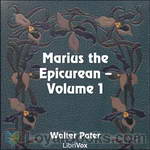 Marius the Epicurean
Marius the Epicurean
Marius the Epicurean is a philosophical novel written by Walter Pater, published in 1885. In it Pater displays, with fullness and elaboration, his ideal of the aesthetic life, his cult of beauty as opposed to bare asceticism, and his theory of the stimulating effect of the pursuit of beauty as an ideal of its own. The principles of what would be known as the Aesthetic movement were partly traceable to this book; and its impact was particularly felt on one of the movement’s leading proponents, Oscar Wilde, a former student of Pater at Oxford. | |
By: Walter Waddington Shirley (1828-1866) | |
|---|---|
 Scholasticism: A Lecture Delivered Before the University of Oxford
Scholasticism: A Lecture Delivered Before the University of Oxford
Walter Waddington Shirley was made Regius Professor of Ecclesiastical History and Canon of Christ Church, Oxford in 1863. This short work comprises the text of a lecture he gave at Oxford University in January, 1866. In it, he describes the historical setting in which scholasticism flourished and then summarizes its features. - Summary by Barry Ganong | |
By: Westminster Assembly | |
|---|---|
 Westminster Larger Catechism
Westminster Larger Catechism
The Westminster Larger Catechism, along with the Westminster Shorter Catechism, is a central catechism of Calvinists in the English tradition throughout the world. The Westminster Shorter Catechism was to be "easier to read and concise for beginners" and the Larger Catechism was to be "more exact and comprehensive". The Catechism was completed by the Westminster Assembly in 1647. It was then adopted by the General Assembly of the Church of Scotland in 1648 and (with modifications relating to the civil magistrate) by the Presbyterian Synod of New York and Philadelphia in 1788. | |
By: Westminster Divines (1646) | |
|---|---|
 The Westminster Confession of Faith
The Westminster Confession of Faith
The Westminster Confession of Faith is a Reformed confession of faith, in the Calvinist theological tradition. Although drawn up by the 1646 Westminster Assembly, largely of the Church of England, it became and remains the 'subordinate standard' of doctrine in the Church of Scotland, and has been influential within Presbyterian churches worldwide. | |
By: Weymouth New Testament | |
|---|---|
 Bible (WNT) NT 13-14: 1 & 2 Thessalonians
Bible (WNT) NT 13-14: 1 & 2 Thessalonians
These are the letters of the Apostle Paul to the fellowship at Thessalonica. Both letters cover a variety of subjects, including proper conduct and wholesome relationships between believers, the impending arrival of Paul's beloved disciple Timothy, and Paul's comments about his own conduct towards his flock. The Thessalonians are mentioned in the book of Acts as having been quite open and receptive the the preaching and teaching of Paul. - Summary by Mark Penfold | |
By: William Alexander MacKay (1842-1905) | |
|---|---|
 Zorra Boys at Home and Abroad, or, How to Succeed
Zorra Boys at Home and Abroad, or, How to Succeed
By Zorra, in the following sketches, is meant a little district in Oxford county, Ontario, some ten miles square, composed of part of East and part of West Zorra, and containing a population of about fourteen hundred. It was settled about the year 1830, chiefly by Highlanders from Sutherlandshire, Scotland.Within the last forty years there have gone from this district over one hundred young men who have made their mark in the world. With most of these it has been the writer's good fortune to be personally and intimately acquainted; and companionship with some of them has been to him a pleasure and a benefit... | |
By: William Ambrose Spicer | |
|---|---|
 Our Day
Our Day
OUR DAY, In the Light of ProphecyBy W.A. SPICERTHE BOOK THAT SPEAKS TO OUR DAY Man may write a true book, but only God, the source of life, can write a living book. The word of God ... liveth and abideth forever. 1 Peter 1:23. The Bible is the living word of God. We look at the volume; we hold it in our hands. It is like other books in form and printer's art. But the voice of God speaks from these pages, and the word spoken is alive. It is able to do in the heart that receives it what can be done only by divine power... | |
By: William Bernard Ullathorne (1806-1889) | |
|---|---|
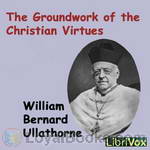 The Groundwork of the Christian Virtues
The Groundwork of the Christian Virtues
William Bernard Ullathorne was a Benedictine monk and Roman Catholic priest who ministered in Australia from 1833 until 1840 and then returned to his native England, where he was ordained a bishop in 1847 and served as Bishop of Birmingham from 1850 until 1888. He is best known for his catechetical trilogy: The Endowments of Man, The Groundwork of the Christian Virtues, and Christian Patience, published in the 1880s. The Groundwork of the Christian Virtues is presented in sixteen lectures, wherein Bishop Ullathorne makes the case that the virtue of humility is the foundation of all virtues, especially of the three theological virtues and the four cardinal moral virtues... | |
 The Endowments of Man Considered in Their Relations with His Final End
The Endowments of Man Considered in Their Relations with His Final End
William Bernard Ullathorne was a Benedictine monk and Roman Catholic priest who ministered in Australia from 1833 until 1840 and then returned to his native England, where he was ordained a bishop in 1847 and served as Roman Catholic Bishop of Birmingham from 1850 until 1888. He is best known for his catechetical trilogy: The Endowments of Man, The Groundwork of the Christian Virtues, and Christian Patience, published in the 1880s. The Endowments of Man is presented in fourteen lectures, adapted from lectures originally delivered to clerics in Olton, England, at St... | |
By: William Blake (1757-1827) | |
|---|---|
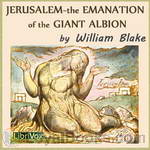 Jerusalem - The Emanation of the Giant Albion
Jerusalem - The Emanation of the Giant Albion
The epic poem Jerusalem was in Blake's own opinion his masterpiece. It is the last of the great prophetic books. Originally produced as an engraved book of 100 pages (only one copy of which was every fully finished in the colouring), the poem develops and unifies many of the themes Blake had been exploring in earlier works. It is a complex and powerful work, full of dramatic imagery and sublime poetry. You might think of it like a poetic version of a Wagner opera. This is poetry as if your life depended on it... | |
By: William Booth (1829-1912) | |
|---|---|
 Purity of Heart
Purity of Heart
William Booth, who co-founded The Salvation Army with his wife Catherine in 1865, wrote several books on the subject of holiness. Purity of Heart, which was first published in 1902, is one of the most concise of these books. Its chapters were originally open letters Booth wrote and circulated throughout The Salvation Army to be read aloud as a ten-week sermon series on the subject of purity of heart. In the first letter, Booth explains what he means by the phrase "purity of heart", and the subsequent sermons build on this theme... | |
By: William Croswell Doane (1832-1913) | |
|---|---|
 Spoken Hymns and Readings for the Easter Vigil
Spoken Hymns and Readings for the Easter Vigil
Spoken hymns and readings for a shorter form of the Easter Vigil liturgy. | |
By: William G. T. Shedd (1820-1894) | |
|---|---|
 Dogmatic Theology - Soteriology
Dogmatic Theology - Soteriology
A systematic exposition of the doctrine of salvation from one of America's most notable theologians of the 19th century. - Summary by InTheDesert | |
By: William H. Griffith Thomas (1861-1924) | |
|---|---|
 Prayers of St Paul
Prayers of St Paul
William Griffith Thomas was a pastor, teacher and co-founder of the Dallas Theological Seminary. This book contains nine devotional commentaries on prayers from Paul's letters to the churches at Thessalonica, Colossi and Ephesus. Thomas is theologically conservative. His commentaries both look at the meaning of the text and apply it to the heart. | |
By: William James (1842-1910) | |
|---|---|
 Varieties of Religious Experience
Varieties of Religious Experience
The Varieties of Religious Experience: A Study in Human Nature is a book by the Harvard psychologist and philosopher William James that comprises his edited Gifford Lectures on "Natural Theology" delivered at the University of Edinburgh in Scotland between 1901 and 1902. These lectures concerned the nature of religion and the neglect of science, in James' view, in the academic study of religion. Soon after its publication, the book found its way into the canon of psychology and philosophy, and has remained in print for over a century. | |
 Pragmatism
Pragmatism
'Pragmatism' contains a series of public lectures held by William James in Boston 1906–7. James provides a popularizing outline of his view of philosophical pragmatism while making highly rhetorical and entertaining lashes towards rationalism and other competing schools of thought. James is especially concerned with the pragmatic view of truth. True beliefs should be defined as, according to James, beliefs that can successfully assist people in their everday life. This is claimed to not be relativism... | |
By: William Law | |
|---|---|
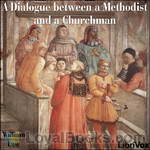 A Dialogue between a Methodist and a Churchman
A Dialogue between a Methodist and a Churchman
William Law (1686-1761) was an Anglican priest, Christian mystic, and one of the most prominent, popular, and controversial theological writers of his time. Law revolutionized the way in which 18th century Anglicans engaged the spiritual aspect of their faith, and his popularity rivaled that of John and Charles Wesley. Law adapted mystical practices from early church writings to the practice and doctrine of the modern British church, with the intention of equipping the Anglican layman to pursue intimacy with Christ... | |
 Serious Call to a Devout and Holy Life
Serious Call to a Devout and Holy Life
This is one of the greatest devotional books of the Christian faith, inspiring thousands to a closer walk with their Lord. John Wesley was a close associate of Mr. Law and was influenced by this very book to some of his great work in England, and America too.William Law uses fictional characters to illustrate what true devotion is, and what it is not. This makes for a very interesting reading experience. Every Christian will find themselves challenged to a closer scrutiny of their lives after reading this book, and will, I believe, be inspired to a personal revival of their consecration and dedication to God. | |
By: William Paley (1743-1805) | |
|---|---|
 Natural Theology
Natural Theology
In this early nineteenth-century classic, William Paley assesses how our understanding of nature reflects characteristics of its creator. First published in 1802, the book went through more than twenty editions, remains in print, and is still a reference point in the ongoing conversation about evolution or creation as the better explanation for the appearance of order and design in our universe. - Summary by Barry Ganong | |
By: William Paxton (1824-1904) | |
|---|---|
 Homiletics: Classification of Divisions
Homiletics: Classification of Divisions
This lecture comes from Paxton's Homiletics class at Princeton Seminary. The 'classification of divisions' refers to different structures for dividing and ordering sermons. He supplies a taxonomy for analysis of both topical and textual sermons. The lecture refers to other lectures from this class which were never published. - Summary by InTheDesert | |
By: William Perkins (1558-1602) | |
|---|---|
 Art of Prophesying
Art of Prophesying
A treatise concerning the sacred and only true manner and method of preaching. To the faithful ministers of the gospel and to all that are desirous of and do labour for the knowledge of holy learning. That common place of divinity, which concerneth the framing of sermons, is both weighty and difficult, if there be any other throughout all that sacred science. For the matter, which it is to explicate and treat on is prophecy; an excellent gift indeed, whether we consider it in respect of dignity, or of use... | |
By: William S. Plumer (1802-1880) | |
|---|---|
 Word to the Weary
Word to the Weary
Sin and sorrow are twin sisters. They were born the same day. They have grown up together. It is as idle to say that there is no misery as to assert that there is no wickedness in the world. Some men seem to be uniformly prosperous. They appear to have but few trials. They have more than heart can wish. They are receiving their good things in this life. They are the abhorred of the Lord. Their eternity will be rueful. Yet even they have their seasons of weariness. And the mass of men have many and palpable sorrows... | |
By: William T. Kane (1880-1946) | |
|---|---|
 For Greater Things: The Story of Saint Stanislaus Kostka
For Greater Things: The Story of Saint Stanislaus Kostka
Saint Stanislaus Kostka was a 16th century Polish novice in the Society of Jesus. Polish nobleman John Kostka was not pleased with the spiritual inclinations of his second son. He did all he could to discourage Stanislaus’s desire for Christian service. Paul, a brother two years older than Stanslaus, bullied him and tried to lure him into more worldly pursuits. Stanislaus was determined to join the Society of Jesus. To demonstrate his determination, Stanislaus walked the long and dangerous 350 miles from Vienna to Rome... | |
By: William Tyndale | |
|---|---|
 Obedience of a Christian Man
Obedience of a Christian Man
"The obedience of a Christian man" begins by contrasting the life of a true Christian to those holding high positions within the Romish Church. A scathing attack against the Popes, Cardinals and Bishops living in luxury, who also refrain from teaching Scripture and would rather attach themselves to "Doctors" who often contradict themselves. Tyndale compares these men to the statements set forth in Scripture which teach that all men will be persecuted for their faith in Christ. He then shares his treatise on how Christians of all walks ought to conduct themselves, from servants to rulers, and all members of the household... | |
By: Winfrid Herbst | |
|---|---|
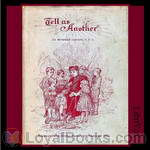 Tell Us Another! Stories That Never Grow Old
Tell Us Another! Stories That Never Grow Old
A collection of 65 little stories for the Catholic child (and adult), designed to captivatingly teach the truths and morals of the faith. This is the companion volume to "Just Stories" by the same author. | |
 Just Stories: The Kind That Never Grow Old
Just Stories: The Kind That Never Grow Old
Good Books are wise counselors. They point out the right way in the devious paths of life. Have we not often stood at the juncture of two roads, the one of righteousness and the other of unfaithfulness, and was it not then that some golden little book acted the part of an opportune adviser and directed us down the highway of truth? Is there one of us who can truthfully say that good books have not been his loyal and trustworthy helpers, his vigilant guardians in life's intricate ways? This unpretentious little book of goodness stories, a companion volume to "Tell Us Another," must speak for itself... | |
By: World English Bible | |
|---|---|
 World English Bible
World English Bible
The Holy Bible derived from the American Standard Bible of 1901. - Summary by Winfred Wardell Henson | |
 Bible (WEB) Apocrypha/Deuterocanon: Book of Tobit
Bible (WEB) Apocrypha/Deuterocanon: Book of Tobit
This book relates the story of Tobit, a righteous Israelite from the tribe of Naphtali. He lived in Nineveh during the time when Israel had been deported to Assyria . Tobit was written originally in Aramaic, perhaps in Hebrew. It was included in the Septuagint Bible and can be found in Catholic and Orthodox Bibles. | |
By: Young's Literal Translation | |
|---|---|
 Bible (YLT) 09: 1 Samuel
Bible (YLT) 09: 1 Samuel
The First Book of Samuel ushers in the era of kings, notably Saul and David, who represent the battle between the kingdoms of law and grace, between flesh and spirit, between disingenuous apology for sins and Godly repentence. The imperfect, but Godly, King David is seen in stark contrast to the bragging, self-exalting, and carnal rule of King Saul. This book is a drama fit for the theater, a story of love and devotion, of courage and cowardice, war and peace. But, most of all, this book and its companion second book are metaphors for the Kingdom of God and the coming of Him who is to sit on David's throne... | |
 Bible (YLT) NT 07: 1st Epistle to the Corinthians
Bible (YLT) NT 07: 1st Epistle to the Corinthians
The First Epistle to the Corinthians was written by the Apostle Paul, after having established the church in Corinth. In it, he responds to a letter written to him by the church, addressing some errors and controversies that have arisen in the church. Among the topics are divisions within the church; immorality; marriage; Christian liberty; and the doctrine of the resurrection. | |
 Bible (YLT) 10: 2 Samuel
Bible (YLT) 10: 2 Samuel
The Second Book of Samuel tells us of this David---the son of Jesse, a common shepherd as a boy, a ruddy youth trying to prove his courage and fighting spirit, and now a man with sons of his own---as king of Israel, the man after God's heart, contrite and humble in spirit....and very deeply flawed. As trouble after trouble besets him at every turn, and as he struggles with trials and tribulations, David remains a man of deep and abiding faith in his LORD, the true king over His people Israel. This story reminds us that to be a leader of God's people, one must submit to Him who gave him such awesome authority and responsibility over this chosen nation. | |
 Bible (YLT) 11: 1 Kings
Bible (YLT) 11: 1 Kings
As one kingdom passes and another emerges, the First Book of the Kings chronicles the ancestral lineage of King David through his son, Solomon, onward. In this book, we see prophets being called to warn of the consequences of unrighteousness, kings either proudly---if imperfectly---obeying God, or arrogantly tossing His laws and commands behind their backs in shows of defiance, and the ramifications that follow Man's insistence on choosing men---rather than God Himself---to rule His people. - Summary by Mark Penfold | |
 Bible (YLT) 12: 2 Kings
Bible (YLT) 12: 2 Kings
In the First Book of Samuel, the people of Israel asked for an earthly king so it could be just like the other nations, a king to fight its battles and lead the people to glory. But, as this Second Book of the Kings makes quite clear, that demand was a mistake. God was their king, and told the people through his prophet, Samuel, about the demands their kings would make upon them, good or evil. As the old saying goes, "Be careful what you wish for." - Summary by Mark Penfold | |
 Bible (YLT) NT 02: Mark
Bible (YLT) NT 02: Mark
An English translation that holds as closely as was possible to the original languages and idioms. - Summary by KevinS | |
 Bible (YLT) NT 19: Epistle to the Hebrews
Bible (YLT) NT 19: Epistle to the Hebrews
An English translation that holds as closely as was possible to the original languages and idioms. | |
 Bible (YLT) NT 27: Revelation
Bible (YLT) NT 27: Revelation
An English translation that holds as closely as was possible to the original languages and idioms. | |
 Bible (YLT) NT 09: Epistle to the Galatians
Bible (YLT) NT 09: Epistle to the Galatians
An English translation that holds as closely as was possible to the original languages and idioms. - Summary by KevinS | |
 Bible (YLT) NT 26: Epistle of Jude
Bible (YLT) NT 26: Epistle of Jude
An English translation that holds as closely as was possible to the original languages and idioms. - Summary by KevinS | |
 Bible (YLT) NT 10: Epistle to the Ephesians
Bible (YLT) NT 10: Epistle to the Ephesians
An English translation made as closely as possible to the language and idioms of the original languages. - Summary by KevinS | |
 Bible (YLT) NT 05: Acts
Bible (YLT) NT 05: Acts
An English translation made as closely to the original languages and idioms as possible - Summary by KevinS | |
 Bible (YLT) NT 17: Epistle to Titus
Bible (YLT) NT 17: Epistle to Titus
A literal translation of the Epistle to Titus from the New Testament translated as closely as possible to the language and idioms of the original. - Summary by KevinS | |
 Bible (YLT) NT 23-25: Epistles of John
Bible (YLT) NT 23-25: Epistles of John
A literal translation that holds closely to the original language and idioms. | |
 Bible (YLT) NT 04: John
Bible (YLT) NT 04: John
An English translation that holds as closely as was possible to the original languages and idioms. - Summary by KevinS | |
 Bible (YLT) NT 06: Epistle to the Romans
Bible (YLT) NT 06: Epistle to the Romans
The Epistle to the Romans is the sixth book in the New Testament, written by Paul to the believers in Rome. It is perhaps the best epistle for outlining the basic foundations of Christian faith, from man's depravity and need for a savior, to salvation given through faith in Christ, to how believers should live in consequence of such a salvation. - Summary by TriciaG | |
 Bible (YLT) NT 20: James
Bible (YLT) NT 20: James
The Epistle of James translated according to the letter and idioms of the original language. Summary by KevinS | |
 Bible (YLT) NT 21-22: Epistles of Peter
Bible (YLT) NT 21-22: Epistles of Peter
Scripture translated according to the letter and idioms of the original languages. | |